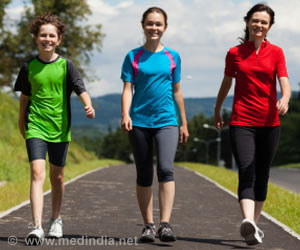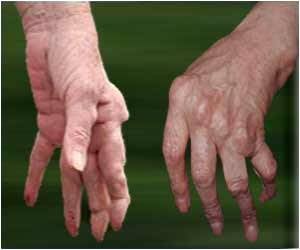Simple and light physical activities, including standing up or walking around, can benefit health, stated a new study.

Exercise and other moderate-to-vigorous physical activity (MVPA) decreases the risk of many age-related chronic diseases, such as heart disease, type 2 diabetes, numerous cancers, Alzheimer’s disease, and dementia.
1st Study: Positive Effects of Standing
The research team observed activity levels of nearly 6,000 American women, ages 63 to 97, in partnership with the Women’s Health Initiative. The research was led by Andrea LaCroix, PhD, chief of epidemiology at UC San Diego School of Medicine. The participants wore a research-grade accelerometer to measure how much time they spent standing, sitting, or moving for seven days.
Participants who spent the most time standing had a 37% reduced death risk. The positive effects of standing were even more vital when participants were standing and moving around at the same time.
“Avoiding prolonged sedentary time and engaging in regular physical activity are key strategies for older Americans to improve their prospects for healthy aging,” said first author Purva Jain, a doctoral candidate and research fellow. “Specifically low-intensity physical activities, such as standing, are important to study due to their feasibility and safety. During our research, we found that simply spending more time on your feet could have important health benefits, such as a decreased risk of mortality.”
Advertisement
“This is the first study of its kind where we were able to decipher between the benefits of standing still versus standing and moving around,” said senior author Andrea LaCroix, PhD, “In doing so, we were able to provide rigorous evidence that even standing still results in positive health benefits.”
Advertisement
In the second study, researchers used physical activity data collected as part of a survey of farmers in rural Malawi, whose lives are minimally affected by technology, and compared it to Americans' lifestyles. The findings of the study are published in BMJ Open Sport & Exercise Medicine.
The team investigated the potential impact of technology-dominated lifestyles on sedentary time and physical activity. The farmers were recruited from Zomba and Ntcheu districts in Malawi, a country in Southeast Africa. Nearly all of the sampled farmers lacked electricity at home and did not own motorized vehicles.
The findings revealed substantially increased levels of activity amongst the Malawi population versus participants in the United States. Americans spend nearly two more hours of sedentary time each day compared to Malawians.
“Being able to compare our current activity levels in the United States to the lifestyle of farmers in Malawi really puts an exclamation point on how inactive we are,” said first author Michael Pratt, MD, director of the Institute for Public Health at UC San Diego. “We evolved to be active beings and we have left that behind for the luxury of certain modern advancements.”
To quantify the difference in physical activity levels in the two samples with contrasting lifestyles, the team asked 414 farmers in Malawi, ages 15 to 85, to wear an accelerometer every day for seven days. The data were then compared to a sample of 3,258 Americans in the same age range measured in previous studies for the same amount of time.
In Malawi adults, the MVPA and light activity levels were higher and sedentary time was lower than those observed in the United States' sample.
The Malawian farmers met current physical activity guidelines 94% of the time, compared to only 55% of the United States sample.
“This study hints at the profound impact of technologically oriented lifestyles that are becoming ever-more dominant throughout the world,” said James Sallis, PhD, Distinguished Professor Emeritus of Family Medicine and Public Health at UC San Diego School of Medicine. “As humans, we are designed to be active, and now we know how much our health depends on it. For people in most high-income countries, we need to put a higher priority on efforts to help them get out of their chairs and move around more throughout the day. For highly-active people in low-income countries, food security is a higher priority.”
Source-Medindia















